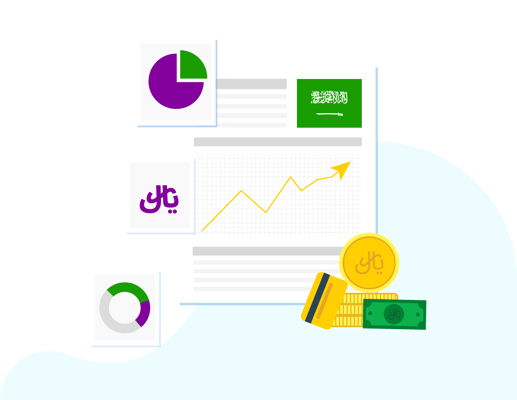The world of online payments has evolved rapidly over the past few years. The online payment gateway market size as of December 2022 is US$ 106.1 Bn. As digital commerce becomes the rule rather than the exception, businesses need a secure way to accept payments quickly and easily. The Hosted Payment Page (HPP) is one of the most prevalent solutions. It is a payment page hosted by a third-party provider that allows merchants to accept payments from customers securely.
Hosted Payment Page is an invaluable tool for businesses that facilitates expedited and secure payments from customers with a single click. A streamlined payment process without redirecting to a third-party website opens up numerous opportunities for merchants to ensure the best customer experience possible. In this blog, we will explore how HPPs can help business owners protect their transactions while providing fast checkouts at the same time!
What is a Hosted Payment Page?
A hosted payment page is a webpage that allows a business owner to create a secure storefront for accepting credit card payments or other modes of online payments. This page processes payments to provide customers with a safe and streamlined checkout experience. The HPP payment page is hosted on the payment processor's secure servers and is accessible via a URL link. HPP allows businesses to securely collect customer payment information without storing sensitive data on their servers.
Customers can visit the store via a link on the merchant's site and enter their billing details. Once completed the transaction, the customer receives a confirmation email containing a unique token that they must paste into the provided field on the merchant's website.
The page is hosted on a payment processor's server, meaning the business does not need to host or manage the page. Instead, the payment processor handles the page, and the company includes a link. This way, businesses do not need to develop and maintain their payment page, making setup easy.
How Does Hosted Payment Page Work?
Let’s consider this use case to understand how a hosted payment page works.
Actors: Customer, Payment Processor
Preconditions: The customer has chosen the items they wish to purchase and has entered their shipping information.
1. The customer has selected their items and is taken to the payment page.
2. The customer is presented with a Hosted Payment Page, which is provided by the payment processor.
3. The customer enters their payment information into the Hosted Payment Page.
4. The customer's payment information is securely transmitted to the payment processor.
5. The payment processor verifies the payment information and processes the transaction.
6. The payment processor notifies the customer of the successful transaction.
7. The payment processor notifies the merchant of the successful transaction.
8. The customer is taken to a confirmation page, which confirms the successful transaction.
The process of using an HPP is quite simple. When customers visit the merchant's hosted payment page, they enter billing information such as personal and credit card information. After entering all required fields, the customer clicks the Pay Now button. At this point, the merchant redirects the customer to the payment gateway provider's website. The payment gateway provider verifies the customer's identity and authorizes the transaction, and the merchant will receive a notification of the successful transaction.
Why Do Companies Use Hosted Payment Pages?
-2.png?width=2932&height=3320&name=Infographic%20-%202%20(1)-2.png)
With the rise of hosted payment pages, more businesses are making the switch from traditional eCommerce platforms. Companies are opting to use these solutions because they provide a range of features and benefits that enable them to optimize their checkout processes for maximum efficiency and security.
Here are some of the important reasons why businesses are turning to Hosted Payment Pages:
1. Easy Setup:
One of the most significant benefits of hosting a payment page is that it eliminates the hassle of setting up an entire shopping cart system. Merchants upload a few files and set up a simple form. All that is required is to integrate the payment page with the merchant's website, and the payment provider will take care of the rest, making it easy for businesses to start accepting payments quickly.
2. Enterprise-Grade Security:
Another benefit of having a hosted payment page is that it gives merchants access to enterprise-level security features. These features include PCI compliance, fraud protection, and multi-factor authentication. HPPs provide customers with a secure checkout experience. Sensitive information is securely transmitted to the payment provider's servers and is not stored on the merchant's website, eliminating the risk of data breaches.
3. Multiple Payment Options:
Hosted payment pages make it easier than ever for customers to select the perfect form of payment. Merchants now have access to popular providers like PayPal and Stripe, as well as credit card or debit card options - providing an array of user-friendly solutions tailored to fit their needs.
4. Tokenized Payment Methods:
Hosted Payment Pages (HPPs) provide businesses with an easy, secure way to process customer payments. By offering tokenized payment options like Apple Pay and Google Pay, companies can use a single login credential for their eCommerce solution, allowing customers to make purchases through their mobile devices easily. Tokenized payment methods are becoming increasingly popular among merchants due to their added convenience and security.
Good Read : What is Payment Tokenization?
5. Simpler Checkout Experience:
Lastly, a significant advantage of using a hosted payment solution is that it simplifies the checkout process eliminating the need to enter payment information manually. Customers no longer have to navigate away from the merchant's homepage to complete a transaction. This process improves the customer experience and reduces the risk of failed payments.
.png?width=123&height=71&name=inai%20logo%20-%20dark%201(1).png)
.png)
.png?width=861&height=229&name=CTA%20(1).png)




